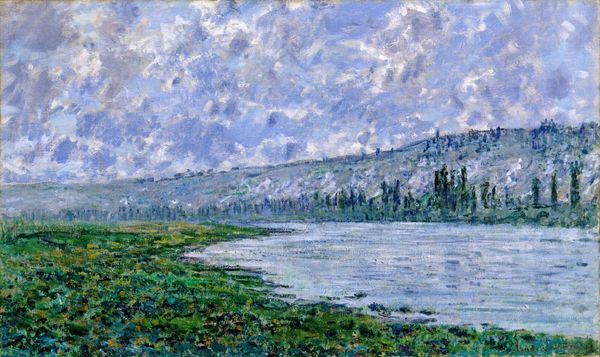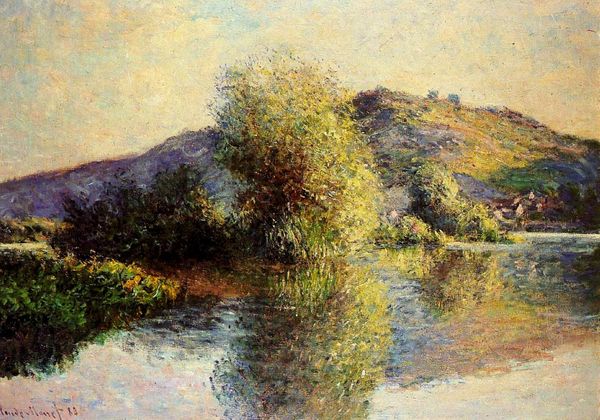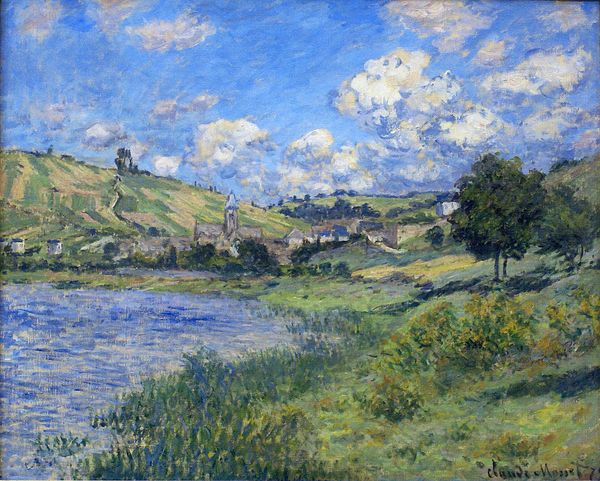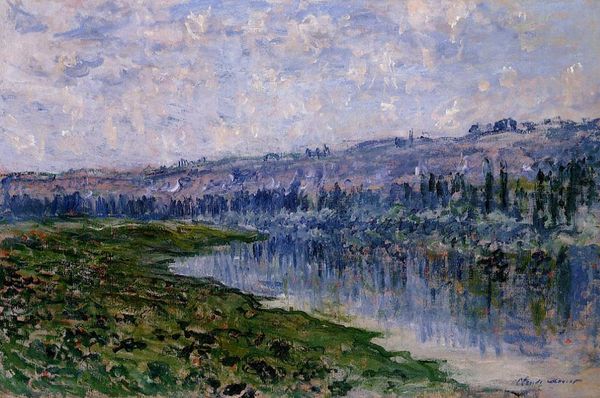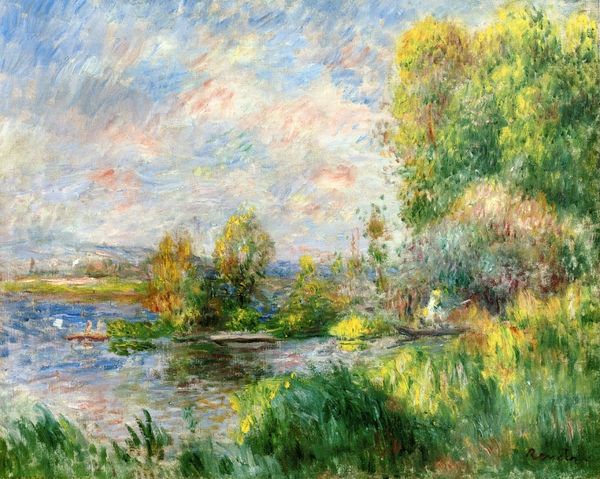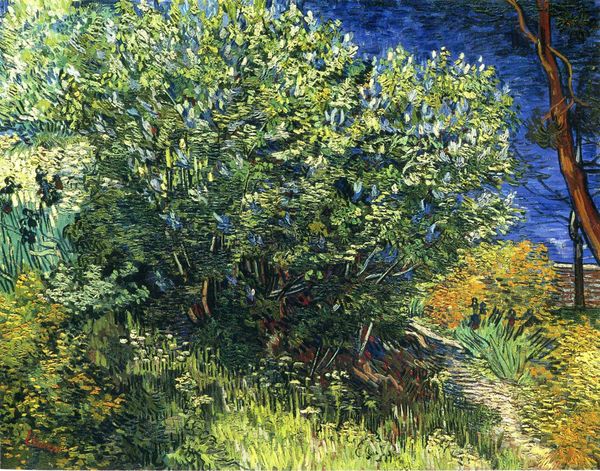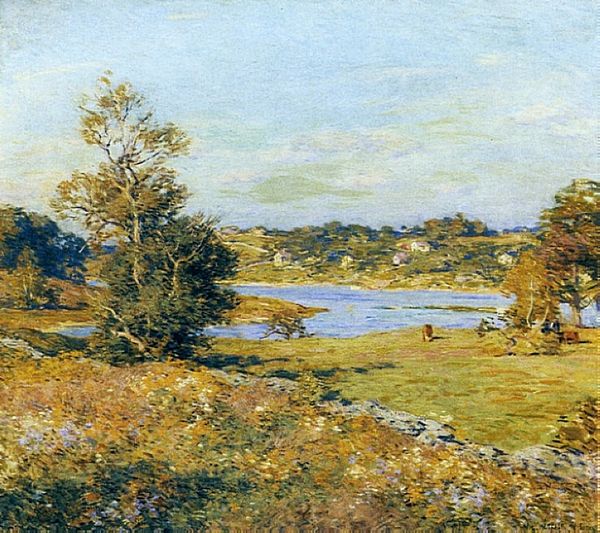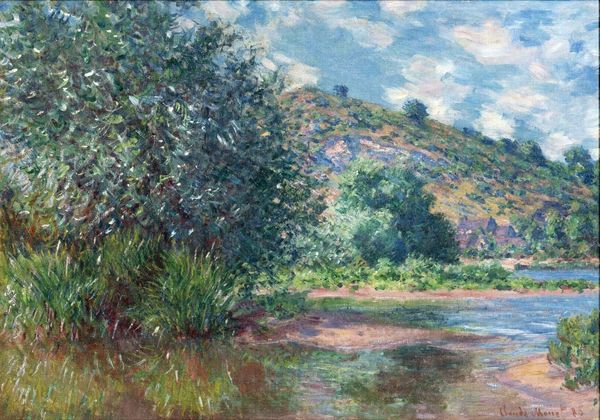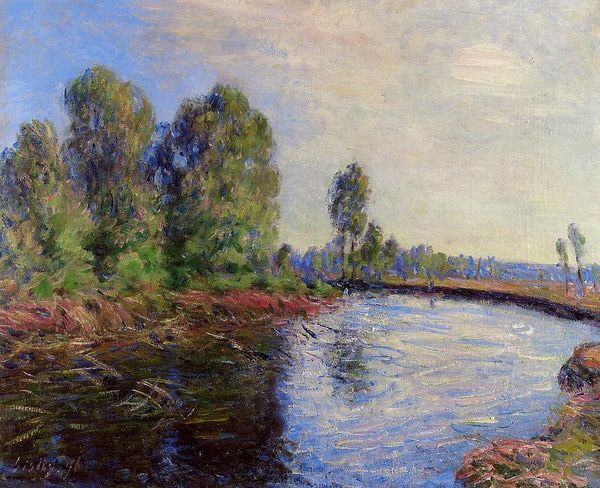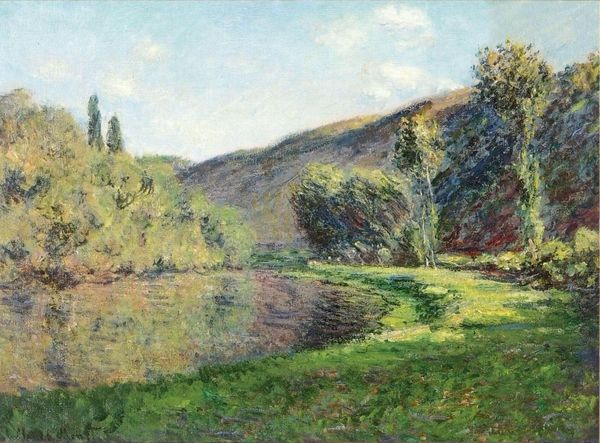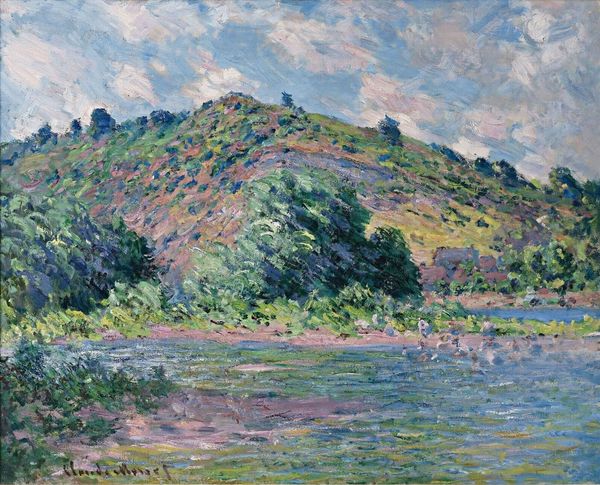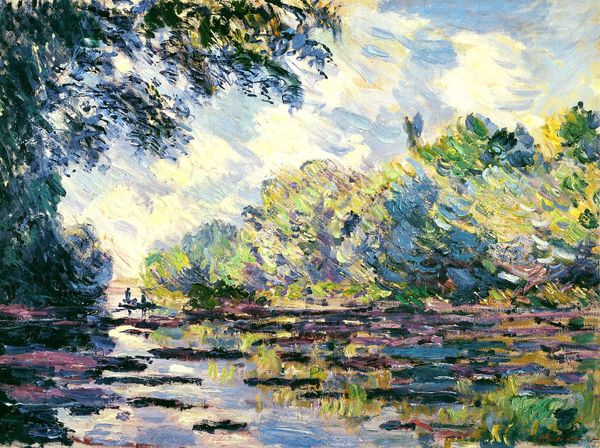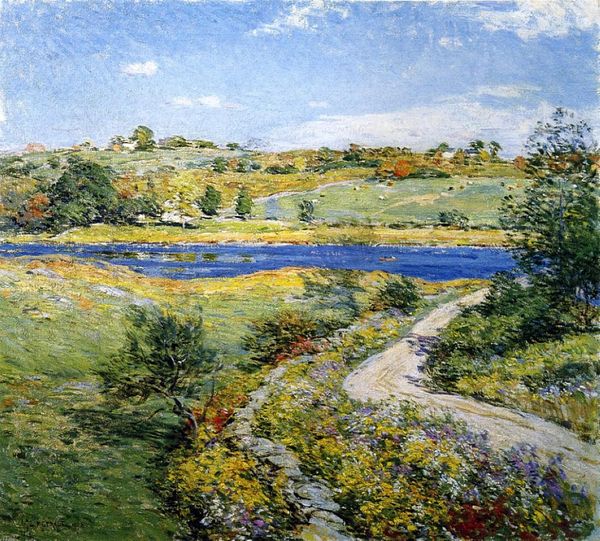
painting, plein-air, oil-paint
#
tree
#
abstract painting
#
painting
#
countryside
#
impressionism
#
plein-air
#
oil-paint
#
landscape
#
river
#
impressionist landscape
#
nature
#
form
#
naturalistic tone
#
seascape
#
natural-landscape
#
wilderness
#
nature environment
#
men
#
coastline landscape
#
water
#
natural environment
Copyright: Public domain
Curator: Looking at Monet's "The Seine at Vetheuil," painted in 1881 using oil paint, one is immediately struck by the shimmering surface of the water. Editor: It's so serene, isn't it? I'm fascinated by how he captured the light, almost as if the canvas itself is illuminated. How would you interpret this work? Curator: Consider the materiality. Monet's rapid brushstrokes, visible and unblended, showcase the physical properties of the paint itself. This emphasis on the material reality aligns with the burgeoning industrial age. Paint, manufactured and readily available, becomes a tool for rendering not just an image, but also a record of its own making. Look at how the strokes of blue suggest both the movement of the water, but also, the physical gesture of applying paint to canvas. Editor: That's interesting. So, instead of hiding the process, he’s actually highlighting the act of painting itself? Does the location – on the banks of the river – also contribute to this materiality? Curator: Precisely. Painting en plein air was becoming more common as advancements in paint tube technology allowed. Monet wasn't just painting a landscape; he was also engaging with a changing social and economic landscape where the artist, with portable materials, could capture fleeting moments in time and render nature more efficiently. He also created demand by working consistently. Can you see any implications in the art market itself? Editor: Oh, right! It democratizes the practice, in a way, moving art outside of formal studios and academies. Curator: Yes! And it encourages collecting – capturing impressions of fleeting light would only be achieved by serial artistic production, influencing both artistic labor and patterns of art consumption. Anything else you notice? Editor: Now I see how the visible brushstrokes aren't just about capturing a scene, but also revealing the artist's process, as a modern means of artistic creation. Curator: Exactly. By foregrounding the materials and techniques, Monet reflected the modern condition and changed art’s accessibility.
Comments
No comments
Be the first to comment and join the conversation on the ultimate creative platform.
